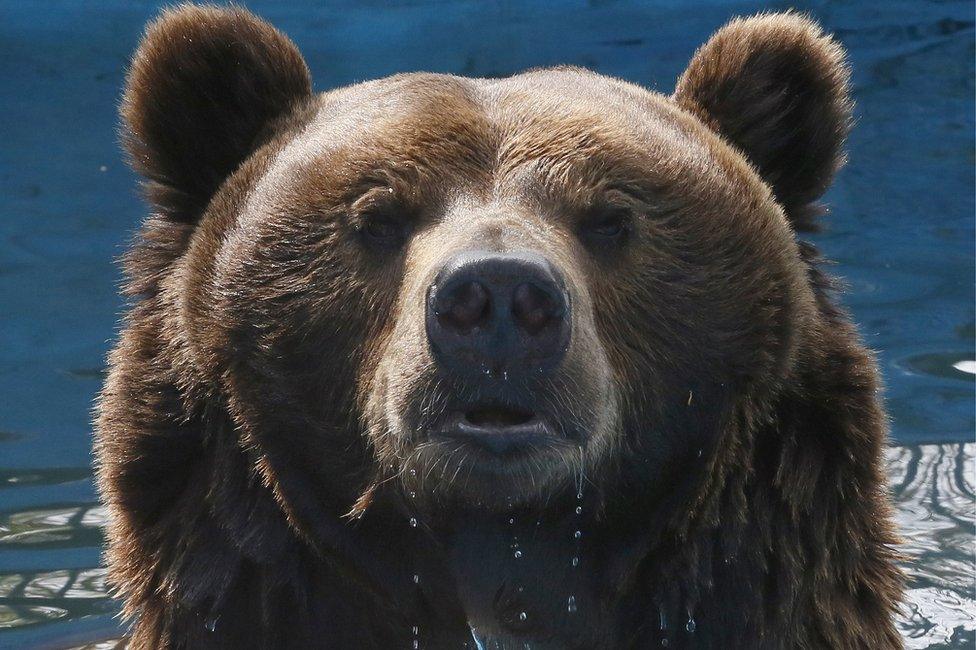Who, What, Why: What should you do if you encounter a bear?
- Published

A family from Montana had a close encounter with a grizzly bear near Yellowstone Park in the US when it jumped on to the bonnet of their car. What should you do if you come face-to-face with a bear, asks Sara Lentati.
The family stayed in their car, kept the windows closed, and eventually the bear got bored and wandered off. But what happens if you don't have the safety of a vehicle?
If you see a bear and it starts to clack its teeth, stick out its lips or huff, then it is warning that you are too close and you should slowly back away, says the US National Park Service website.
You shouldn't run or make any sudden movements as this could startle the animal, triggering a chase response and you cannot outrun a bear. Climbing a tree is also a bad idea as most bears will simply follow you.
If a bear charges at you, then your best chance against a grizzly is to stand your ground, says Kerry Gunther, Yellowstone Park's bear management leader.
Most charges are a bluff and usually the bear breaks off. If you are carrying bear pepper spray then now is the time to use it. If the bear keeps coming then "play dead."
However, don't fall to the ground too early, warns the National Park Service. "Wait until the bear makes contact or the nano-second just before the bear makes contact. Drop to the ground; keep your pack on to protect your back. Lie on your stomach, face down and clasp your hands over the back of your neck with your elbows protecting the sides of your face."
When the bear leaves, you should stay on the ground for several minutes to make sure it has left the area and hasn't come back for a second look.
A defensive attack, when a bear is startled or is protecting its cubs, usually last no longer than a couple of minutes. If it goes on longer then you may be facing a predatory attack.
"A defensive bear will keep its head low and ears laid back. A predatory bear has its head up and ears erect," says Gunther.
If it's the latter, you should start to fight back, says the Parks Canada website. "Intimidate that bear: shout; hit it with a branch or rock, do whatever it takes to let the bear know you are not easy prey."
That's what Ralph Persson did when he encountered a roaring, charging, brown bear in his local woods in Sweden. He roared back, frightening the animal into the trees.
"I learnt from cranes how to scare the bears, I've seen cranes scare a bear family and I did the same as them. Make a lot of noise and go with your wings out - I had my arms out. You must be big and show the animal it will cost them a lot to get you," says Persson.
Blacks bears are usually more timid and the usual advice is to stand your ground and make a lot of noise to scare them off.
US family in Yellowstone National Park: "Oh my God there's a bear on my car!"
Ralph Persson spoke to Newsday on the BBC World Service.
Subscribe to the BBC News Magazine's email newsletter to get articles sent to your inbox.